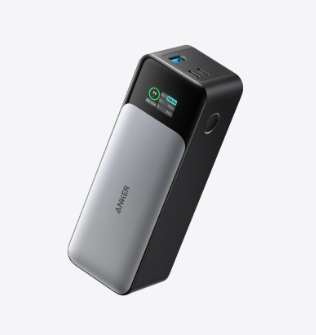Autonomic nervous system
Introduction
Theautonomicnervoussystemisapartoftheperipheralefferentnervoussystem,whichcanregulatetheactivitiesofinternalorgansandvascularsmoothmuscle,myocardiumandglands.Alsoknownasautonomicnervoussystem,involuntarynervoussystem.Sincethevisceralreflexisusuallynotcontrolledatwill,itiscalledtheautonomicnervoussystem.Theautonomicnervoussystemiscomposedoftwoparts:thesympatheticnervoussystemandtheparasympatheticnervoussystem.Itinnervatesandregulatestheactivityandsecretionofvariousorgans,bloodvessels,smoothmusclesandglands,andparticipatesinendocrineregulationofglucose,fat,waterandelectrolytemetabolism,andbodytemperature.Sleepandbloodpressureetc.Underthecontrolofthecerebralcortexandhypothalamus,thetwosub-systemsbothantagonizeandcoordinatethephysiologicalactivitiesoftheorgans.Thestructureoftheautonomicnervoussystemcanbedividedintothecentralpartandtheperipheralpart.Theautonomicnervoussystemismainlydistributedtotheinternalorgans,cardiovascularandglands.Theircentralpartisalsointhebrainandspinalcord.Thesurroundingpartsincludevisceralmotor(efferent)fibersandvisceralsensory(afferent)fibers,whichconstitutevisceralmotornervesandVisceralsensorynerves.
Physiologicalstructure
Overview
Includingtwosystemsofsympatheticnervoussystemandparasympatheticnervoussystem.Generally,anorganisdistributedwithtwosystemsofnervefibers.Withdualinnervation,atthesametime,theeffectsofthesetwonervoussystemsonanorganaremostlyantagonistictoeachother.Themorphologicalcharacteristicsoftheperipheralpathwaysofthesetwosystemsarethatthenervefibersfromthecentralnervoussystemandnervecellsreplaceneuronsoncewhentheyreachtheterminalorgans.Thefirstfiber,thepreganglionicfiber,ismyelinated.Itterminatesintheganglionornerveplexusinthemiddle,andformsasynapsewiththenervecellshere,re-emittingtheunmyelinatedpostganglionicnervefibertoreachtheeffector.Theonlyexceptionisthesympatheticnervesdistributedtotheadrenalglands,whosepreganglionicfibersdirectlyreachtheglandcellsandinnervatethesecretionofadrenaline.Thisindicatestheneurologicaloriginofmedullarycells.Therefore,itiscalledthesympathico-adrenalsystem(sympathico-ad-renal,system).
Sympatheticnervoussystemandparasympatheticnervoussystem
Theautonomicnervoussystemisdividedintothesympatheticnervoussystemandtheparasympatheticnervoussystem.Thesympatheticnervoussystemismorecomplexthantheparasympatheticnervoussystem.Thesympatheticnervoussystemiscomposedoffourkindsofneurons,1.preganglionicautonomicneuron,2.premotorneuron(premotorneuron)regulatestheactivityofpreganglionicautonomicneuron,3.afferentneuron,conductssignalsfromperipheralreceptors,4.Interneuronsthatconnectafferentsignalstohigher-levelcenters.Thesympatheticpremotorneuronsarelocatedontheanteriorventralsideofthemedulla,theanteriorventralmiddleofthemedulla,thecaudateraphenucleus,theponsandtheparaventricularnucleusofthehippocampus.PlaysanimportantroleinthetemporalityofTheefferentpathwayofthesympatheticpremotorneuronsdescendstothegraymatterofthefirstthoracicvertebraetothesecondorthirdlumbarspinalvertebrae.Ganglionsareformedinthreeways:pairsofparavertebralsympatheticnervechains,variousunpaireddistalnerveplexuses,andganglialocatednearthetargetorgan.Thepreganglionicfibersleavethespinalcordattheanteriorhornofthespinalcord,andentertheparavertebralsympatheticgangliaalongwiththespinalnervetrunk.22pairsofsympatheticgangliaarearrangedonbothsidesofthespine,andthegangliacommunicatewitheachothertoformasympatheticchain.Thepreganglionicfibersarereplacedagainintopostganglionicneuronsinthesympatheticganglia,andthesympatheticpostganglionicfibersaresenttothecorrespondingeffectororgansalongwiththespinalnerves.
Sympatheticnervesfromthethreegangliaofthecervicalsympatheticchainaredistributedtotheheadandneck,regulatingbloodvesseltension,pupilsize,secretionofsweatandsalivaryglands,andhairmovement.Thesympatheticgangliaofthelowerneckandthesympatheticgangliaofthefirstthoracicvertebrafuseintostellategangliaonbothsidesofthespinalcord.Thepostganglionicfibersoftheupperchestsympatheticgangliaformtheheart,esophagus,andlungsympatheticplexus,respectively.Unpairedprevertebralsympatheticgangliaformtheabdominalcavity,aorta,renalartery,andupperandlowermesentericsympatheticgangliainfrontoftheabdominalandpelvicvertebralbodies.Theceliacgangliacomefromthelateralhornsofthespinalcordfrom5to12ofthethorax,andthepostganglionicsympatheticnervesinnervatetheliver,spleen,stomach,kidney,pancreas,smallintestine,andproximalcolon.Thepostganglionicsympatheticnervesoftheuppermesentericsympatheticganglioninnervatethedistalcolon.
Sympatheticnervefibersfromthesixthtoninththoracicvertebralnervesformthegreatervisceralnerve,whichterminatesinthesemilunarganglion,whichseparatesthenervefiberstotheceliacganglion,andthenbranchestothestomach.Theroleofsympatheticnervesistoinhibitthemovementofthestomachandreducethesecretionofgastricjuice,andtotransmitpain.Theparasympatheticnervefiberscomefromtheleftandrightvagusnerves,whichpromotethemovementofthestomach,increasethesecretionofgastricjuice,andareopposedtotheactionofthesympatheticnerves.Theneuralnetworkinthesubmucosaandmuscularlayerofthegastricwalliscomposedofsympatheticandparasympatheticnervefiberstocoordinatetherelationshipbetweengastricmotilityandsecretoryfunction.
Theautonomicnervesofthetwosystemsareofteninastateofexcitement,thatis,continuoustension,whichsendscertainnerveimpulsestotheinnervatedorgans,whichiscalledcontinuousinnervation(tonicinnervati-on).Theexcitabilityoftheorgansgovernedbyantagonismismaintainedbythebalancebetweenthetensionofthetwosystems.Adecreaseintensioninonenervoussystemhasthesameeffectasanincreaseintensioninanothernervoussystem.Furthermore,theautonomicnervoussystemissensitivetospecialdrugs(autonomicnervepoison),whichcaneasilycauseexcitementorparalysis.Mostofthepharmacologicaleffectshavetheirownspecificitiesforthesympatheticnervoussystemandtheparasympatheticnervoussystem.Therefore,itisusedclinicallyasatreatmentmethodforvariousdiseasescausedbyabnormalautonomicnervoussystem,andasanauxiliarymethodforsurgicaloperations.
Undernormalorstressconditions,theautonomicnervoussystemplaysanimportantroleinmaintainingthebody'scardiovascularsystem,gastrointestinaltractandbodytemperaturehomeostasis.Themaintenanceofhomeostasisbytheautonomicnervoussystemisanautonomousregulationthatisnotdirectlyrelatedtoconsciousness.Oneofthegoalsofanesthesiologistsperformingclinicalanesthesiaistoblocktheconductionofnoxiousstimuliwhensurgicaltraumamaycausegreatstresstothebody,appropriatelyinhibittheexcessivestressresponseoftheautonomicnervoussystem,andensurethestabilityofthebody'senvironment.Ontheotherhand,diseasessufferedbysurgicalpatientsmaysignificantlyaffectthefunctionoftheautonomicnervoussystem,therebychangingthenormalresponseoftheautonomicnervoussystemtosurgeryandanesthesia.Therefore,anesthesiologistsshouldhaveacomprehensiveandin-depthunderstandingofthefunctionoftheautonomicnervoussystemandtheeffectsofanestheticsonthefunctionoftheautonomicnervoussystem.

Thecentralpart
Thecentralpartincludesthesympatheticnervesofthecerebralcortex,thehypothalamusandthebrainstem,andtheparasympatheticnucleus,aswellasthecerebralcortexofthelateralhornsofthespinalcord.EachareahasautonomyRepresentativeareasofnerves,suchasthefunctionofparacentrallobulesandbladderandanalsphincter,relatedtooccipitallobe,pupil,insulaandvisceralactivities,relatedtothalamuscanbedividedintotwoareas,theanteriorareaistherepresentativeareaofparasympatheticnerve,andtheposteriorareaissympatheticThenerverepresentativearea,hypothalamusiscloselyrelatedtothemetabolismofsugar,water,saltandfat,bodytemperature,sleep,breathing,bloodpressureregulation,etc.
Thecenteroftheautonomicnervoussystem,fromthespinalcordtothecerebralcortex,hasacenterthatregulatesandcontrolsautonomousfunctions.Theycanaffectsympatheticandparasympatheticnerveactivity.Thehypothalamusseemstoconcentratethoseneuronsthatspecificallyaffectsympatheticactivity.Therefore,thehypothalamusissometimescalledthehead(nerve)ganglionoftheautonomicnervoussystem.Sincethehypothalamusalsohasanimportantfunctionofcontrollingendocrineactivities,thehypothalamusisalsoanimportantendocrineintegrationcenter.Thelimbicsystemincludesthehippocampus,septalarea,cingulategyrus,amygdala,etc.,whichisthehighercenteroftheautonomicnervoussystem.However,thedetailedorganizationofcentralneuronsatvariouslevelsandtheirpathwaysandmechanismsneedtobestudiedindepth.
Partoftheperipheralnervoussystemthatcanregulatetheactivitiesofinternalorgansandvascularsmoothmuscle,myocardiumandglands.ThetermautonomicnervoussystemwasoriginallyproposedbyBritishphysiologistJ.N.Langley,andhassincebeenwidelyused.Alsoknownasautonomicnervoussystemorinvoluntarynervoussystem.Sincethevisceralreflexisusuallycarriedoutautonomouslyandgenerallycannotbecontrolledatwill,itiscalledtheautonomicnervoussystem.However,insomecases,peoplecanstillcontrolorinfluencevisceralactivitiesthroughindirectmeans.Forexample,throughmanipulativeconditioningtraining,theactivitiesofcardiovascular,digestivetractandotherorganscanbecontrolled.Theautonomicnervoussystemcanbedividedintotwoparts:thesympatheticnerveandtheparasympatheticnerve.Peoplehavenoticedforalongtime:emotionaltension,pain,orinjuryhaveaparticularlyobviousautonomousresponse.Thewordsympathetic(sympathetic)originatedfromtheGreekwordsympathetikos(sympathetic).
Thetransmitterisacetylcholine
Thetransmitterreleasedbythepreganglionicfiberendingsofsympatheticorparasympatheticnervesisacetylcholine:allthepostganglionicfiberendingsandinnervationofparasympatheticnervesInafeworganssuchassweatglands,thetransmitterofsympatheticpostganglionicfiberendsisalsoacetylcholine,andmostofthetransmittersofsympatheticpostganglionicfiberendsarenorepinephrine.Ifthevariouscomponentsoftheautonomicnervoussystemarenamedaccordingtonerveterminaltransmitters.Thenervefibersthatuseacetylcholineasthetransmitterarecalledcholinergicfibers;thenervefibersthatusenorepinephrineasthetransmitterarecalledadrenergicfibers.
Inthemuscularplexusofthegastrointestinaltract,thereisalsoafiberthatisneithercholinergicnoradrenergic.Itstransmittermaybepurinenucleotides.Therefore,somepeoplecallthisfiberpurinergicfiber.Butmoreexperimentshaveshownthatthetransmittersofthesefibersarepeptides,sothesefibersshouldbecalledpeptidenervefibers.
Functionalfeatures
Notcontrolledbywill
Notcontrolledbywill,heartbeat,bowelmovement,etc.Eachorganacceptstwosetsofnervoussystems,sympatheticandparasympatheticatthesametime.Thefunctionsofthetwoareopposite.Oneincreasestheactivityoftheorgan,andtheotherweakenstheactivityoftheorgan.Structurally,theefferentnervecontainstwoneurons,oneislocatedinthebrainorspinalcord(preganglionicneuron),andthecellbodyoftheotherneuronislocatedintheganglion.Thedendritesandtheaxonsofthepreganglionicneuronformprocesses.touch.Adrenalmedullacellsoriginatefromtheneuralcrest,buttheyhavenoprotrusionsandareendocrinecells.
DualInnervation
Theautonomicnervoussystemofmammalsincludessympatheticnervesfromthethoracicandlumbarspinalcordandparasympatheticnervesfromthebrainstemandsacralspinalcord.Aftertheautonomicnerveisemittedfromthebrainandspinalcord,itmustfirstexchangeneuronsintheautonomicganglion,andthenreachtheeffector.Thefibersthatreachtheautonomicgangliafromthebrainandspinalcordarecalledpreganglionicfibers.Thefibersthatinnervatetheeffectorsfromtheganglionarecalledpostganglionicfibers.Thepreganglionicfibersofthesympatheticnerveformsynapseswithalargenumberofpostganglionicneurons,sothesympatheticnerveactivityisgenerallydiffuse;thepreganglionicfibersoftheparasympatheticnerveareonlyconnectedtoafewpostganglionicneurons,sotheactivityoftheparasympatheticnerveisoftenlimited.Generally,internalorgansareduallyinnervatedbysympatheticandparasympatheticnerves.
Antagonism
Theantagonismofsympatheticandparasympatheticnerves.Theeffectsofsympathyandparasympathyonorgansreceivingdualinnervationaregenerallymutuallyantagonistic.Forexample,thesympatheticnerveacceleratestheheartbeatandslowsgastrointestinalmotility;theparasympatheticnerveslowstheheartbeatandstrengthensthegastrointestinalmotility.Butthisantagonismiscomplementary.Inaddition,sympatheticnerveexcitementisoftenaccompaniedbythesecretionofadrenalmedulla,soitiscalledthesympatheticadrenalsystem.Theexcitementofthevagusnerveisoftenaccompaniedbythesecretionofislets,soitisalsocalledthevagus-isletsystem.Fromtheperspectiveofenergymetabolism,thefunctionofsympatheticnervescanpromoteenergyexpenditure,whilethefunctionofparasympatheticnervescanenhanceenergystorage.Thetwoarealsocomplementary.Becauseitiseasiertostoreafterconsumption,andstorageisforfutureconsumption.
Toniceffect
Toniceffect.Inaquietstate,theautonomicnervefibersoftenhavelow-frequencyefferentimpulsestransmittedtotheeffectors,whichplayaslightandregularstimulatingeffect,whichiscalledthetoniceffect.Forexample,cuttingoffthevagusorsympatheticnervesthatinnervatetheheartcanspeeduporslowtheheartbeat,respectively.Thisshowsthattheuncutanteriorvagusnerveslowsdowntheheartbeat,andthesympatheticnervesspeeduptheheartbeat.However,thetwocomparisonsdifferdependingonthespeciesofanimals.Forexample,rabbitshaveastrongersympatheticeffect;horseshaveastrongervagratoryeffect.
Emergencyresponse
Sympathetic-adrenalglandactivityandemergencyresponse.Whenanimalsencountervariousemergencies,suchasstrenuousexercise,bloodloss,andseverecold,thebodywillexperienceaseriesofsympathetic-adrenalsystemactivitiesextensivelystrengthenedphenomenoncalledemergencyresponse(stressresponse).AmericanphysiologistW.B.Cannonputforwardtheemergencytheorybasedonthisresponse.Thesereactionsinclude:acceleratedheartbeat,extensivecontractionofbloodvesselsintheskinandinternalorgans,bronchiectasis,acceleratedliverglycogendecomposition,etc.Thephysiologicalsignificanceistomobilizethebody'svariouspotentialforcestoadapttothedrasticchangesintheenvironment.Iftheanimal’ssympatheticnervechainisremoved,theanimal’sabilitytocopewithemergenciesisgreatlyreduced.
EmotionControl
Theautonomicnervoussystemisaspecialsysteminnervatedbythelowerpartsofthecentralnervoussystem.Itspecificallycontrolsandregulatestheactivitiesofvariousorgansandtissuesoftheorganism.Undertheactionofemotionalstimulation,throughtheactivitiesoftheautonomoussystem,variousorgansandtissuesoftheorganismarewidelyactivated,andobviousphysiologicalresponsesthatexceedthenormalcircadianrhythmareproduced.Theactivityoftheautonomicnervoussystemisnotthecentralmechanismofemotions,anditsactivitiessupportandcontinueemotions.Theautonomicnervoussystemiscomposedoftwobranchsystems,thesympatheticnerveandtheparasympatheticnerve.Thesympatheticsystemandtheparasympatheticsystemjointlycontrolandregulatetheactivitiesofinternalorgans-heart,bloodvessels,stomach,intestines,etc.,externalglands-saliva,tears,sweatglands,etc.,andendocrineglands-adrenalglands,thyroidglands,etc.Thefunctionalrolesofthesympatheticsystemandtheparasympatheticsystemareopposite,andthetwoopposeeachother.Thiseffectcalmstheorganismactivatedbythesympatheticsystemtolimitandpreservetheenergyconsumptionoftheorganism.Theactivityoftheautonomicnervoussystemisinvoluntary,anditiscloselyrelatedtoemotionalprocesses.Therelationshipbetweenthemisthatwhenapersonisemotionallystimulated,theemotionalexcitementandtensioncausedbytheincrease,thelevelofphysiologicalarousalandthedegreeoforganactivationalsoincrease.However,thequestionofwhethervariousemotionshavespecializedpatternsofphysiologicalactivationhasnotyetbeenpreciselyexplainedandclearlyverified.Sofar,ithasonlybeenpossibletodescribethephysiologicalchangeswhencertainemotionsoccur.Forexample,anxietycausestheperistalsisofthedigestivetracttoweaken,andthesecretionofdigestivejuiceisinhibited;angercausesthesecretionofadrenalhormonestoincrease,cardiovascularactivityaccelerates,bloodpressure,bloodsugar,andskintemperaturerise;fearcausesperipheralvasoconstriction,palecomplexion,andpharynx,Drymouth,decreasedskintemperature,coldsweats,etc.
Disorder
Performance
Autonomicnervesarealsocalledautonomicnervesbecausetheyarenotdominatedbyhumanwill.Theautonomicnervedirectlyorindirectlyregulatesthefunctionalactivitiesofinternalorgansandmaintainsthebalanceoftheinternalandexternalenvironmentsofthebody.Oncedysfunction,itcanleadtotheimbalanceofvisceralfunctionactivities.Themainmanifestationsofautonomicdysfunction:changesinthedepthandfrequencyofbreathingcanoccurintherespiratorysystem;inthecardiovascularsystem,itcanbemanifestedasparoxysmalhypertension,periodichypotension,sinustachycardiaorbradycardia,andsimilartomyocardiumManifestationsofinfarction:gastrointestinalfunctionanddigestivejuicesecretiondisordersinthedigestivesystem;frequenturination,urgency,dysuria,andevenurinaryincontinenceorurinaryretentionintheurinarysystem;ifthesymptomsareparoxysmal,facialflushingandabnormalsweatingmayoccur,Pupildilationordilation,tachycardiaorslowheartbeat,salivation,chills,abdominalpain,etc.Otherscanstillproducesexualdysfunction,sleepdisorders,etc.
Treatment
Treatmentofautonomicdysfunction:
(1)Oryzanol20-50mgiscommonlyusedtoadjustautonomicnervefunction,3timesaday.
(2)Forsymptomatictreatmentofpalpitation,usepropranololanddiazepam(Valium);forexcessivesweating,useChinesepatentmedicineYupingfenggranulesorOysterpowder;useChinesepatentmedicineShuoquanpillsorthreeforneurogenicfrequenturinationGoldtablets;forgastrointestinaldysfunction,vitaminBsolution,pepsinormulti-enzymetabletscanbeused;peoplewithsleepdisorderscantakediazepam(Valium)5mgorchlordiazepoxide10mgbeforegoingtobed;otherscanstillusediazepamasappropriatePan(Valium)5mg,2times/day;Alprazolam0.25mg,3times/day;Estazolam1-2mg,2-3times/day;Eprofoxin0.15g/day,continuoususe7-30days.
Relationshipwithcholelithiasis
About33-46%ofpatientswithlivercirrhosisareaccompaniedbycholelithiasis,anditsincidenceisknowntoincreasewiththecourseandseverityofliverdisease.Itisspeculatedthatautonomicdisordersmayberelatedtogallstoneformationorgallbladderdisease.Asseenindiabeteswithautonomicdisorders,autonomicdisorderscandelaygallbladderemptying.Thepurposeofthestudyistoidentifypatientswithcholelithiasisorgallbladderdiseasewithchroniclivercirrhosis,whomayormaynotbeassociatedwithautonomicdisorders.123patients(including71males)withvaryingdegreesofliverdiseasewereexaminedforautonomicnervefunction,gallstonesorgallbladderdisease(children'sgroup:A,40;B,45;C,35).Ofallpatients,54patientshadcholelithiasis,andanother22patientshadothergallbladderdiseases(cholecystitis,commonbileductstones,orsilt-likestones).Ninety-sevenpatientssufferedfromautonomicdisorders(48patientshadanabnormalityinoneexaminationand49patientshadtwoormoreabnormalitiesintheexamination).Cholelithiasishasasimilarincidenceinseveralgroupsofchildrenwithcirrhosis(A57%,B64%,C63%).Theincidenceofcholelithiasisorgallbladderdiseasedidnotincreaseinwomen,blackpeople,patientswithdiabetes,andpatientswithalcoholiclivercirrhosis.Theincidenceofgallbladderdiseasewassignificantlyhigherinpatientswithautonomicdisorders(51%vs35%,P=0.08);inchildrenwithcirrhosisingroupC,cholelithiasis(P=0.018)orgallbladderdisease(P=0.03)Thediseaseismoreoftenaccompaniedbyautonomicdisorders.TheresultsshowthatautonomicdisordersmaypromotetheformationofgallstonesinpatientswithadvancedlivercirrhosisbydamagingthegallbladderandtheactivityofOddi'ssphincter.
Latest: Photosensitive resin plate
Next: asset Management








